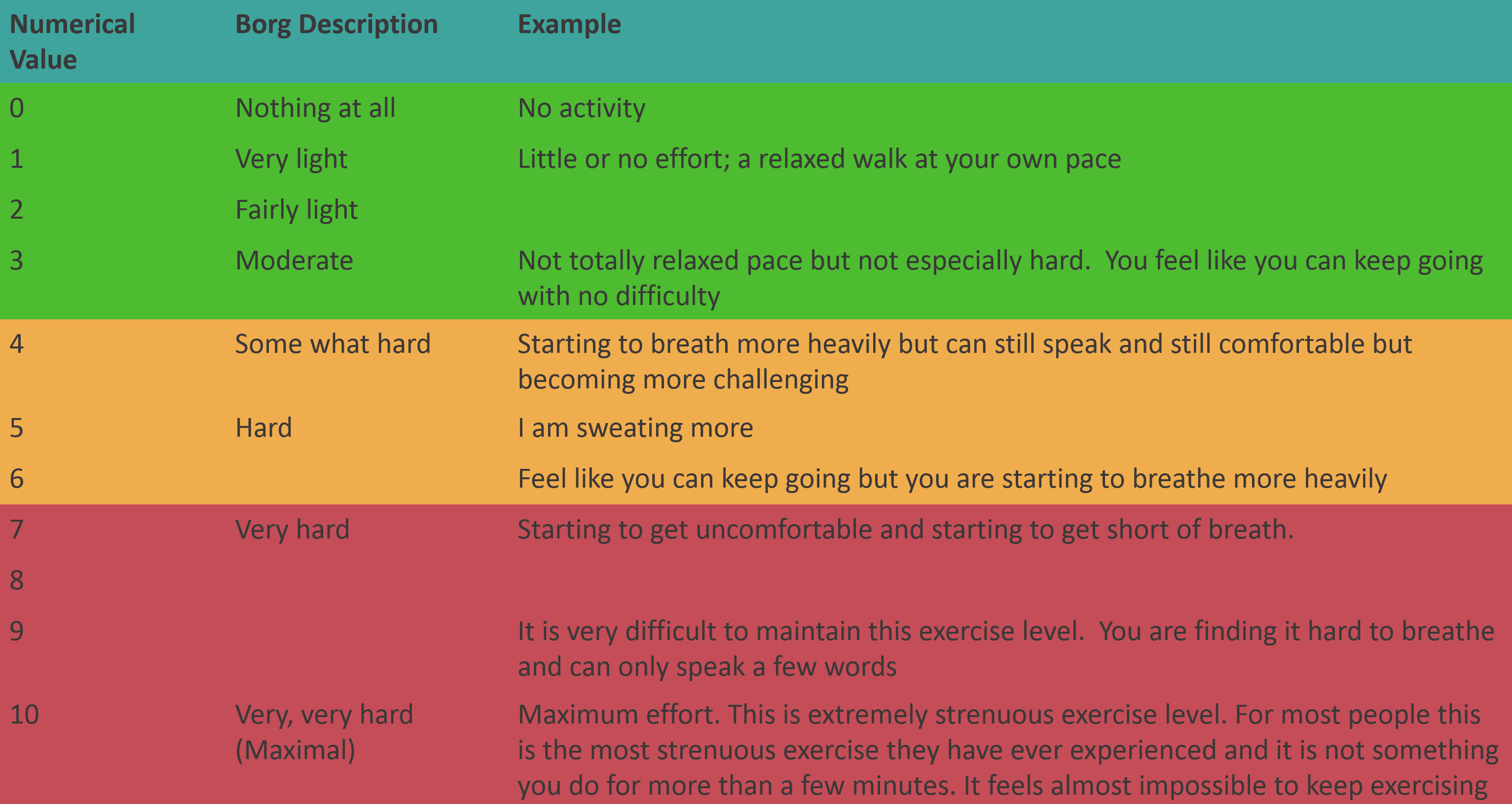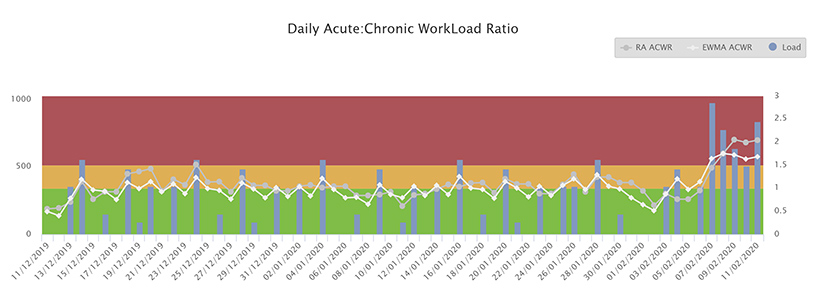Using Session-RPE with your team

Swedish researcher Gunnar Borg passed away in February 2020 at the age of 92. He is the man behind the Borg Scale and the use of Session RPE which is used worldwide and across many different areas to estimate physical exertion. He left behind a dynamic and long-lasting legacy. Let’s take a closer look at the use of Session RPE and its benefits.
The Goldilocks Principle
When it comes to preparing athletes for competition, the effective monitoring of training load is one of the most important factors in assisting the coach’s efforts to make improvements. Objective wearable technology such as GPS devices and heart rate monitoring can help but are often expensive and don’t capture the subjective experience of the athlete themselves. That’s where the use of the self-reported rate of perceived exertion (RPE) comes into play. The session-RPE method calculates training load by multiplying the session intensity by the duration of the session to provide a measure of load in arbitrary units. There is a world of difference between a 5km stroll and a high intensity 5km run. The session RPE method allows you to distinguish this and provide a more accurate picture of the training session. The importance of assessing training is summed up by George Beckham who states that two of the most important questions that a coach should be asking about his or her players are:
“How are they handling the training loads?”
and
“Are they ready to perform?”
It’s not enough to simply throw training at athletes and assume they will/can handle it. The training loads that we, as coaches, can give to an athlete have to adhere to the Goldilocks principle: training loads have to be high enough to elicit adaptation, but not so high they result in overtraining
A closer look at Session RPE
Gunnar Borg was a psychology professor at Stockholm University in the 1960s when he created the RPE/Borg scale. The original version asked athletes to rate their level of exertion on a scale of 6 to 20, with 6 being ‘very light’ and 20 indicating ‘very difficult’. Borg found that if the 6-20 rating was multiplied by 10 there was a high co-relation to the athlete’s heart rate; so for example if an athlete rated themselves a ’12’, it equated to a heart rate of 120. He later added a 10 point scale (Borg CR10 scale) which is now widely used, not only in sports, but also in clinical settings to estimate levels of pain. Session RPE has been recognized as an excellent method of calculating training load.

The value of the session-RPE method is summed up by Aaron Coutts, Lee Wallace and Katie Slattery in Monitoring Training load when they state
Training load can be monitored in many different ways, however, we recommend the session-RPE method for quantifying training load because it is simple to use, easy to understand and relatively easy to implement. From a sports science perspective, a valid and reliable record of training load allows the effectiveness of different training to be assessed. It can be used to ensure that both sufficient training loads are implemented and that excessive loads are not. Finally, over time and with some practice, accurate monitoring of training load will enable the coach to better understand the best training methods for individual athletes. Ultimately, this may lead to improved performance in competition
Studies highlight value of session-RPE
The validity of the use of Session RPE has been verified through a number of studies in a variety of sports. In one such study entitled Use of RPE-Based Training Load in Soccer 19 young soccer players were analyzed. The researches came to the following conclusion.
The results of this study show that the session-RPE can be considered a good indicator of global internal load of soccer training. This method does not require particular expensive equipment and can be very useful and practical for coaches and athletic trainer to monitor and control internal load, and to design periodization strategies
A recent study has looked at the co-relation between GPS variables and session RPE. The article The influence of the perceived exertion rating on football training and competition summarizes the results of two studies looking at how Session RPE co-relates with objective GPS variables. The main study examined an elite and sub-elite soccer team (equivalent to the first and second divisions in Spain) for approximately twenty weeks. All training sessions were assessed using variables such as the total time of the training sessions, the percentage of training time at high intensity, the heart rate and the RPE. A multi-camera system was used to collect data on the distance covered by each player during match day as well as the distance covered at high speed. Antonio Gómez, physical trainer for F.C. Barcelona’s first division team and lead researcher concluded
After analyzing the correlation between the data, it was verified that the RPE significantly correlated with all the training session variables: total time, training time at high intensity and the heart rate average. This proved that it is a simple, reliable and a free tool for quantifying training load ….Today, we use it for the entire club, as a variable that provides us with information about the internal load – the effect on the body – of the entire training process. We complement it with GPS data which gives us objective measurements of external load – the workload.”
Another study An investigation into the relationship between match play performance characteristics and post-match RPE responses in professional rugby union players by McGahan, J., O’ Neill, C., Burns, C., concludes
The findings of this study suggest that there is a strong relationship between match play RPE and the total number of high impact collisions among both backs and forwards. Furthermore, the study demonstrates that there is also a positive relationship between RPE and the volume of high speed running performed. The study suggests strong support for RPE as a subjective measure of fatigue that provides a simple and effective method of gauging player effort during games.
Value of consistent monitoring
If you collect session RPE data on a consistent basis, and educate your players and staff regarding best practices re use of same, you will have a wealth of information that will allow you to:-
- monitor training loads compared to intended loads and thereby check the implementation of your training program
- detect athletes who are not coping with training
- help prevent over-training and illness
- help ensure that athletes returning from injury are not progressing too quickly
- compute acute chronic workload ratios, strain, monotony and other useful calculations
- use training data to compare with subjective wellness as well as objective measures such as test results and GPS variables (if in use)
- understand the best training methods for individual athletes
- help improve performance

Monitoring with Metrifit
Research has given scientific backing to the value of both subjective and objective athlete monitoring and how vital this is becoming in keeping athletes injury free, motivated and performing at optimal levels. Metrifit’s traffic light reporting helps coaches to tailor their athlete’s individual training and load and prevent injury by monitoring their acute to chronic load ratios along with their mental state and readiness to train.
To find out more contact us at or click on ‘Request Demo’ below.
Follow us on social media where we post regular blogs related to sports, performance and well-being.
References
Quantify your workouts with session-RPE by George Beckham
Monitoring Training Load by Aaron Coutts, Lee Wallace and Katie Slattery
Relationship between load and readiness to train in a Gaelic football pre-competition training camp

 Previous Post
Previous Post Next Post
Next Post





